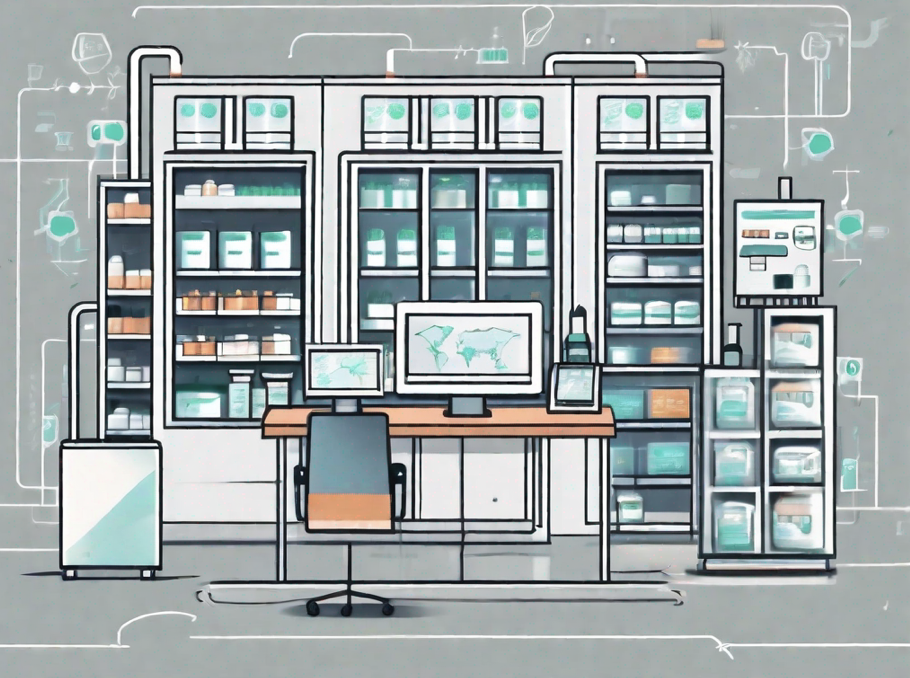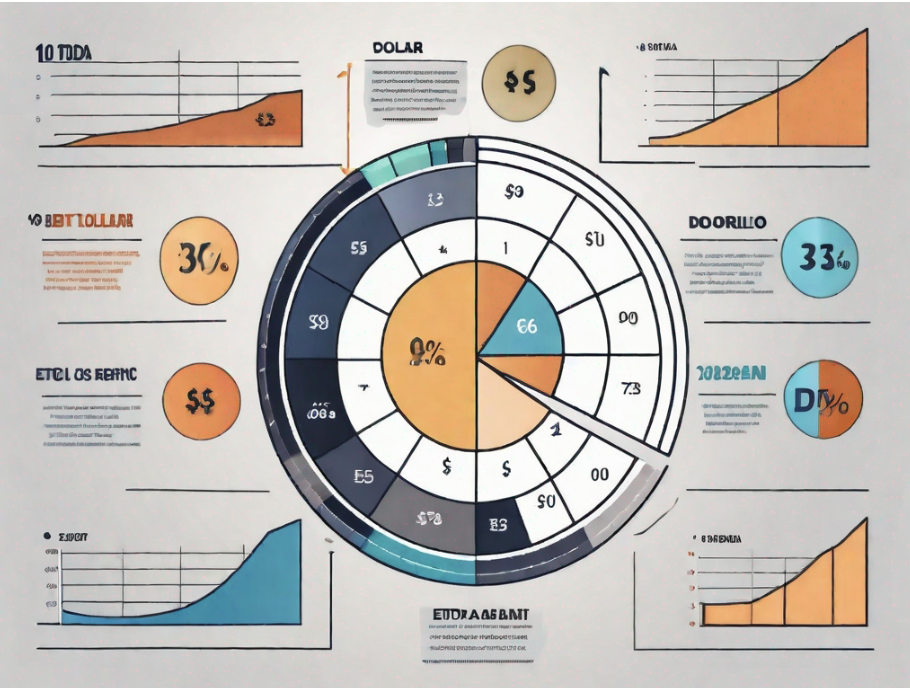How to Implement Effective Treasury Management in Pharmaceutical Manufacturing
How to Implement Effective Treasury Management in Pharmaceutical Manufacturing
Discover the essential strategies and best practices for implementing effective treasury management in pharmaceutical manufacturers.

Treasury management plays a crucial role in any business’s efficient and effective operation, and the pharmaceutical manufacturing industry is no exception. In order to navigate the complex financial landscape and ensure smooth cash flow, it is essential for pharmacy manufacturers to implement effective treasury management strategies. In this article, we will explore the key aspects of treasury management in pharmaceutical manufacturers and provide practical insights on maximizing its benefits.

Basics of Treasury Management in Pharmaceutical Manufacturing
Basics of Treasury Management in Pharmaceutical Manufacturing
Treasury management encompasses the processes and techniques that enable businesses to effectively manage their cash flow, liquidity, and financial risks. For pharmacy manufacturers, this involves the management of various financial activities such as cash and liquidity management, working capital optimization, risk identification and mitigation, and investment management.
Pharmaceutical manufacturing face unique financial challenges due to the nature of their industry. One of the key aspects of treasury management in pharmacy manufacturing is the management of cash and liquidity. With the constant need to purchase raw materials, pay suppliers, and cover operational expenses, pharmacy manufacturers must ensure that they have sufficient cash on hand to meet their financial obligations. This requires careful monitoring of cash inflows and outflows, as well as the implementation of effective cash management strategies.
In addition to cash and liquidity management, working capital optimization is another critical aspect of treasury management in pharmacy manufacturing. Working capital refers to the funds that are tied up in the day-to-day operations of the business, including inventory, accounts receivable, and accounts payable. Pharmacy manufacturers need to strike a balance between maintaining adequate levels of working capital to support their operations and minimizing excess working capital that could be better utilized elsewhere. This involves analyzing inventory turnover rates, optimizing credit terms with suppliers, and implementing efficient accounts receivable and payable processes.
Risk identification and mitigation is also essential to treasury management in pharmaceutical manufacturing. The pharmaceutical industry is subject to various risks, including regulatory changes, supply chain disruptions, and changes in market demand. Pharmaceutical manufacturers need to identify and assess these risks and implement strategies to mitigate their impact on their financial performance. This may involve diversifying suppliers, implementing robust quality control measures, and staying up-to-date with regulatory requirements.
Furthermore, investment management plays a crucial role in treasury management for pharmacy manufacturers. With surplus cash, pharmacy manufacturers have the opportunity to invest in short-term and long-term financial instruments to generate additional income. This may include investing in money market funds, government bonds, or other low-risk investment options. By effectively managing their investments, pharmacy manufacturers can maximize their returns while maintaining the necessary liquidity to meet their financial obligations.
Developing a Strategic Plan for Treasury Management
Developing a Strategic Plan for Treasury Management
An effective treasury management strategy begins with a well-defined plan. Pharmaceutical manufacturers should develop a strategic roadmap that aligns with the overall goals and objectives of the business. This plan should outline the key areas of focus, the desired outcomes, and the implementation timelines.
When developing a strategic plan for treasury management, it is crucial to involve key stakeholders from various departments within the organization. This ensures that the plan considers the specific requirements and challenges of the pharmaceutical manufacturing industry, as well as the business’s unique needs.
One of the key areas of focus in developing a strategic plan for treasury management is cash flow management. This involves effectively managing the inflow and outflow of cash within the organization to ensure that there is enough liquidity to meet the day-to-day operational needs of the business. It also involves optimizing the timing of cash flows to maximize returns and minimize costs.
In addition to cash flow management, another important aspect of treasury management is risk management. This involves identifying and mitigating various financial risks that the organization may face, such as interest rate risk, foreign exchange risk, and credit risk. By implementing appropriate risk management strategies, pharmacy manufacturers can protect their financial assets and minimize potential losses.
Furthermore, treasury management also encompasses working capital management. This involves managing the company’s current assets and liabilities to ensure that there is sufficient working capital to support the ongoing operations of the business. By effectively managing working capital, pharmacy manufacturers can optimize their cash conversion cycle and improve overall operational efficiency.
Another key component of treasury management is investment management. This involves making strategic investment decisions to maximize returns on surplus cash and idle funds. By carefully analyzing market conditions and investment opportunities, pharmacy manufacturers can generate additional income and enhance their overall financial performance.
Moreover, developing a strategic plan for treasury management also requires considering the regulatory and compliance requirements of the pharmacy manufacturing industry. This includes staying updated on relevant financial regulations, tax laws, and accounting standards to ensure that the organization remains in compliance and avoids any legal or financial penalties.
Lastly, it is important to regularly monitor and evaluate the effectiveness of the treasury management strategy. This involves conducting periodic reviews and assessments to measure the achievement of desired outcomes and identify any areas for improvement. By continuously monitoring and refining the strategic plan, pharmacy manufacturers can adapt to changing market conditions and ensure the long-term success of their treasury management efforts.
Identifying Cost Savings Opportunities with Treasury Management
Identifying Cost Savings Opportunities with Treasury Management
Treasury management can significantly contribute to cost savings in pharmaceutical manufacturers. By optimizing cash flows and effectively managing working capital, pharmacy manufacturers can reduce financing costs, enhance interest income, and minimize the need for external funding.
One key cost savings opportunity in treasury management is implementing efficient cash management techniques to reduce idle cash balances and maximize interest income. Pharmacy manufacturers can achieve this by closely monitoring their cash inflows and outflows, ensuring that cash is not sitting idle in low-interest-bearing accounts. By actively managing their cash positions and investing surplus funds in high-yield financial instruments, pharmacy manufacturers can generate additional interest income, thereby boosting their overall profitability.
Another cost savings opportunity lies in optimizing supplier payment terms. By negotiating favorable payment terms with suppliers, pharmacy manufacturers can improve their cash conversion cycles and minimize financing costs. For instance, extending payment terms from 30 days to 60 days can provide pharmacy manufacturers with additional time to generate cash from their operations before paying their suppliers. This extended payment period can help reduce the need for short-term financing and lower interest expenses, resulting in significant cost savings over time.
Streamlining the collection of accounts receivable is yet another avenue for cost savings in treasury management. By implementing efficient billing and collection processes, pharmacy manufacturers can accelerate cash flows and reduce bad debt expenses. Timely and accurate invoicing, coupled with proactive follow-up on outstanding payments, can help minimize the risk of late or non-payment by customers. This, in turn, improves cash flow predictability and reduces the need for costly debt collection efforts or write-offs, ultimately leading to cost savings for the pharmacy manufacturer.
Furthermore, exploring opportunities for bulk purchasing and inventory management can also contribute to cost savings in treasury management. By leveraging their purchasing power and negotiating favorable terms with suppliers, pharmaceutical manufacturers can reduce the cost of raw materials and other inputs. Additionally, implementing efficient inventory management techniques, such as just-in-time inventory systems, can help minimize holding costs associated with excess inventory. By optimizing their purchasing and inventory management practices, pharmacy manufacturers can achieve significant cost savings and improve their overall financial performance.
Understanding the Role of Risk Management in Treasury Management
Understanding the Role of Risk Management in Treasury Management
Risk management is an essential component of treasury management in pharmaceutical manufacturers. It involves identifying, assessing, and mitigating various financial risks that can impact the organization’s cash flow and financial stability.
Pharmacy manufacturers face a myriad of risks that can have a significant impact on their operations and bottom line. These risks can arise from both internal and external factors, making it crucial for organizations to have a comprehensive risk management strategy in place.
One of the key risks that pharmacy manufacturers need to manage is market risk. Fluctuations in interest rates, exchange rates, and commodity prices can have a profound effect on the profitability of pharmacy manufacturers. To mitigate these risks, organizations often implement hedging strategies and closely monitor market trends. By doing so, they can make informed decisions and take proactive measures to protect their financial interests.
Liquidity risk is another critical aspect of risk management in treasury management. Inadequate cash reserves or sudden cash outflows can pose significant challenges for pharmaceutical manufacturers. To effectively manage liquidity risks, organizations develop robust cash forecasting mechanisms and maintain a contingency fund. These measures ensure that they have sufficient liquidity to meet their financial obligations and navigate through any unforeseen circumstances.
Credit risk is yet another risk that pharmaceutical manufacturers must address. Non-payment or delayed payment by customers can have a detrimental impact on cash flow, affecting the overall financial stability of the organization. To minimize credit risks, pharmacy manufacturers conduct thorough credit assessments of their customers and implement effective credit control measures. By doing so, they can mitigate the potential for bad debts and ensure a healthy cash flow.
By actively managing these risks, Pharmaceutical manufacturers can safeguard their financial stability and ensure uninterrupted operations. It is crucial for organizations to have a dedicated risk management team that continually monitors and assesses these risks.
This team works closely with other departments within the organization to implement appropriate risk mitigation strategies and ensure that the organization remains resilient in the face of potential challenges.

Assessing Cash Flow Needs for Pharmaceutical Manufacturing
Assessing Cash Flow Needs for Pharmaceutical Manufacturing
Accurate cash flow forecasting is vital for effective treasury management in pharmacy manufacturing. It helps pharmaceutical manufacturers anticipate cash inflows and outflows, identify potential cash shortfalls or surpluses, and make informed financial decisions. When assessing cash flow needs, pharmacy manufacturers should consider various factors such as:
1. Sales projections and revenue realization
Sales projections play a crucial role in assessing cash flow needs for pharmacy manufacturing. By analyzing historical sales data, market trends, and customer demand, manufacturers can estimate future sales volumes and revenue. This information allows them to anticipate cash inflows and plan accordingly.
2. Production and inventory management
Efficient production and inventory management are essential for maintaining a healthy cash flow in pharmaceutical manufacturers. Manufacturers need to consider factors such as production capacity, lead times, and inventory turnover rates. By optimizing these processes, they can ensure a steady supply of products and minimize cash tied up in excess inventory.
3. Supplier payment terms and negotiation
The terms and conditions agreed upon with suppliers can significantly impact cash flow needs. Negotiating favorable payment terms, such as extended payment periods or discounts for early payments, can help manufacturers manage their cash flow more effectively. Establishing strong relationships with suppliers and exploring mutually beneficial arrangements is crucial.
4. Operating expenses, including salaries, utilities, and raw materials
Operating expenses are a significant component of cash flow needs in pharmacy manufacturing. Manufacturers must consider expenses such as employee salaries, utility bills, and raw material costs. By accurately forecasting these expenses and implementing cost-saving measures, manufacturers can optimize their cash flow and improve profitability.
5. Capital expenditure requirements
Pharmaceutical manufacturers must often invest capital to expand their operations or upgrade equipment. These investments can have a significant impact on cash flow needs. Manufacturers must carefully evaluate the financial feasibility of capital expenditures and consider alternative financing options to minimize the strain on cash flow.
By accurately assessing cash flow needs, pharmaceutical manufacturers can improve their cash management strategies, optimize working capital, and ensure the availability of funds when needed.
Utilizing Technology to Facilitate Treasury Management
Utilizing Technology to Facilitate Treasury Management
In today’s digital era, technology plays a pivotal role in streamlining treasury management processes. Pharmaceutical manufacturers can leverage various treasury management systems (TMS) and financial technology solutions to automate and enhance their treasury operations.
Technology has revolutionized the way businesses operate, and the pharmaceutical manufacturing industry is no exception. By embracing innovative solutions, pharmaceutical manufacturers can optimize their treasury management practices, ensuring efficient cash flow, minimizing risks, and making informed financial decisions.
One of the key technologies that can facilitate treasury management in pharmacy manufacturing is the use of Treasury Management Systems (TMS). These systems provide comprehensive tools for cash flow forecasting, liquidity management, and risk analysis. With real-time data and advanced analytics, pharmaceutical manufacturers can gain valuable insights into their financial position, enabling them to make proactive decisions and mitigate potential risks.
In addition to TMS, electronic banking platforms have become indispensable for efficient cash management in the pharmacy manufacturing industry. These platforms enable seamless payment processing, bank account reconciliation, and cash flow optimization. By integrating their banking activities into a centralized electronic system, pharmacy manufacturers can streamline their cash management processes, reduce manual errors, and improve overall operational efficiency.
Automated reconciliation and reporting tools are another technology solution that can significantly enhance treasury management in pharmacy manufacturing. These tools automate the process of matching and reconciling financial transactions, eliminating the need for manual intervention. By leveraging these tools, pharmacy manufacturers can improve financial control, ensure data accuracy, and generate comprehensive reports for better decision-making.
Furthermore, the adoption of Robotic Process Automation (RPA) can revolutionize routine treasury tasks in the pharmaceutical manufacturers industry. RPA technology allows for the automation of repetitive and rule-based processes, such as data entry, report generation, and transaction processing. By implementing RPA, pharmaceutical manufacturers can free up valuable resources, reduce human errors, and focus on strategic treasury initiatives.

Implementing Effective Controls for Treasury Management
Implementing Effective Controls for Treasury Management
Implementing robust controls is essential for ensuring the effectiveness and integrity of treasury management in pharmaceutical manufacturers. This involves establishing clear policies and procedures, defining segregation of duties, and implementing regular reviews and audits. Some of the key control measures that pharmaceutical manufacturers should consider include:
- Authorization and approval processes for financial transactions
- Periodic reviews and reconciliations of bank accounts and financial statements
- Monitoring and reporting of key performance indicators (KPIs) related to treasury management
- Establishment of a whistle-blower mechanism to report any suspicious activities
By implementing effective controls, pharmacy manufacturers can mitigate the risk of fraud, errors, and non-compliance and ensure the integrity of their treasury management practices.
Analyzing Treasury Management Performance
Analyzing Treasury Management Performance
Regular performance analysis is essential for continuous improvement in treasury management. Pharmaceutical manufacturers should establish relevant performance indicators and evaluate their treasury management practices against these benchmarks. Some of the key performance indicators that pharmacy manufacturers should consider include:
- Cash conversion cycle
- Liquidity ratios
- Working capital turnover
- Return on cash investments
- Accuracy of cash flow forecasts
By analyzing treasury management performance, pharmacy manufacturers can identify areas of improvement, make informed decisions, and drive positive financial outcomes.
Monitoring Treasury Management Trends in Pharmaceutical Manufacturing
Monitoring Treasury Management Trends in Pharmaceutical Manufacturing
Treasury management practices are constantly evolving, driven by technological advancements, regulatory changes, and industry trends. Pharmacy manufacturers need to stay abreast of these developments to ensure that their treasury management strategies remain effective and up-to-date. Monitoring treasury management trends involves:
- Regularly reviewing industry publications, reports, and research papers
- Attending industry events, conferences, and webinars
- Engaging with industry experts and peers through networking
- Collaborating with banks and financial institutions to understand emerging solutions and best practices
By monitoring treasury management trends, pharmaceutical manufacturers can proactively adapt to changes, seize opportunities, and enhance their financial performance.

Conclusion
Implementing effective treasury management is vital for pharmaceutical manufacturers seeking to optimize cash flow, enhance financial performance, and mitigate financial risks. By understanding the basics, developing a strategic plan, identifying cost savings opportunities, and leveraging technology, pharmacy manufacturers can successfully navigate the complex financial landscape and achieve their overall business objectives.
Furthermore, by prioritizing risk management, assessing cash flow needs, implementing effective controls, and analyzing performance, pharmacy manufacturers can strengthen their financial stability and position themselves for long-term success in the dynamic pharmacy manufacturing industry.
Finally, by staying up-to-date with the latest treasury management trends, pharmacy manufacturers can ensure that their strategies remain relevant and aligned with industry best practices. With a comprehensive and proactive approach to treasury management, pharmaceutical manufacturers can maximize cash flow, optimize liquidity, and drive sustainable growth in an increasingly challenging marketplace.
It All Starts With a FREE consultation!
Every client’s needs are unique and require varying amounts of time and attention. You can use this form to let us know what you’re looking for, and we’ll reach out to you to schedule an appointment and talk about rates for your business needs.
Please be as detailed as possible with what work is needed, what industry your business is in, and where you are located.
Our team will contact you with in 2 business days to set up the first meeting. We will make sure all your needs are taken into account when selecting the package and type of services you need.




Stay In Touch